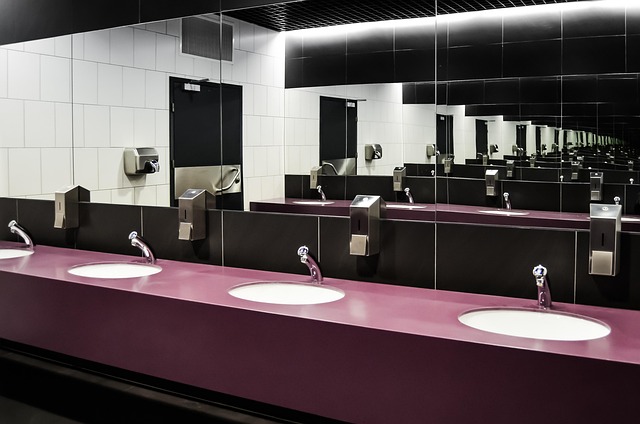Approved Document T: New Requirements for Toilet Accommodation in Buildings
On 1st October 2023, the UK Government introduced Approved Document T, a new addition to the Building Regulations in England. This document establishes clear statutory guidance for the design and provision of toilet accommodation in non-domestic buildings. Its introduction reflects a growing societal and policy focus on dignity, privacy, and accessibility in public and commercial buildings. The new regulations ensure facilities cater equitably to all users including men, women, disabled individuals, and those who require additional support.
What is Approved Document T?
Approved Document T supplements the Building Regulations by providing detailed standards for toilet accommodation. It applies to new non-domestic buildings and certain building refurbishments or changes of use. The document outlines the appropriate number, type, and arrangement of toilets, including requirements for separate male and female facilities, unisex options, accessible toilets, and where necessary, Changing Places facilities.
The core aim of Document T is to ensure dignity and choice for building users. Its guidance encourages inclusive design while also protecting the rights to privacy and safety, particularly for users of single-sex spaces. This reflects wider government efforts to balance inclusive policies with the need to safeguard vulnerable groups and ensure equitable access.
Why Were the Regulations Amended?
Amendments to the Building Regulations were driven by several key concerns. Public consultation revealed increasing dissatisfaction with the widespread shift toward unisex toilet provision at the expense of separate male and female facilities. Many respondents, including women’s groups and accessibility advocates, highlighted that unisex-only options can compromise privacy, security, and comfort, particularly in high-traffic public buildings.
Another important factor was the need for clearer regulatory guidance. Prior to Document T, there was a lack of clarity on the minimum standards for toilet provision in new or redeveloped non-domestic spaces. This led to inconsistent design practices and, in some cases, facilities that did not adequately meet the needs of all users.
Moreover, Document T complements existing regulations like Approved Document M (access to and use of buildings), by reinforcing the legal obligation to design inclusive environments. Together, these documents form part of the government’s commitment to equal access, safeguarding single-sex spaces, and enhancing facilities for disabled individuals.
Toilet Accommodation Requirements Under Document T
One of the most significant changes under Document T is the explicit requirement for separate male and female toilets in most non-domestic buildings. This means that where toilets are provided, they must include distinct male and female spaces, each with appropriate numbers of WC cubicles and washbasins. In male toilets, urinals may also be provided but cannot replace the required minimum number of enclosed cubicles.
While separate sex facilities are mandatory in most cases, unisex toilets are also permitted, especially in smaller buildings, or where their inclusion is appropriate based on building use or layout. However, any unisex provision must be in the form of fully self-contained rooms that include a toilet, wash basin, and a sanitary bin, with a full-height door that can be locked from the inside. These are not intended to replace male and female toilets in medium or large buildings, but rather to provide additional flexibility or address specific user needs.
In addition to standard toilet provision, the regulations reiterate the requirement for accessible toilets, as outlined in Approved Document M. Buildings must provide accessible unisex WCs, typically at least one per floor, depending on the scale and use of the building. These toilets must include sufficient space for wheelchair users and appropriate fittings such as grab rails, emergency alarms, and accessible wash basins.
For certain large or public buildings such as shopping centres, stadiums, transport hubs, and healthcare facilities, Changing Places toilets must also be included. These are larger rooms that provide more extensive support facilities for individuals with profound or multiple learning disabilities or physical disabilities that require assistance.
Another key inclusion in Document T is the requirement for sanitary disposal facilities. Every female toilet cubicle, and all unisex toilets, must have a sanitary bin to ensure users are not forced to leave the room to dispose of menstrual products. This standard reinforces the commitment to hygiene, comfort, and equality.
Transitional Provisions
To facilitate compliance, the government has introduced transitional provisions for projects already underway. Where a building notice, full plans application, or initial notice was submitted before 1 October 2023, and construction begins before 1 April 2024, the previous regulations may still apply. However, for any construction work that started on or after 1 April 2024, even if it was approved earlier, Document T must be followed.
These transitional arrangements are intended to allow sufficient time for industry adaptation without halting or significantly delaying ongoing projects.
Legal Status and Guidance for Compliance
Approved Document T is issued under Section 6 of the Building Act 1984, making it a statutory guidance document. While following its guidance is not strictly mandatory, it provides the most straightforward and defensible route to achieving compliance with the Building Regulations. Designers, developers, and building control authorities are expected to treat its content as best practice, unless they can demonstrate an equally effective alternative approach.
Document T must be read alongside other relevant legislation and guidance, particularly Approved Document M and BS 6465-1 (Code of Practice for the design of sanitary installations). These documents provide technical detail on spatial planning, fixture layout, minimum provision numbers, and accessibility standards.
To ensure compliance, building designers should engage with Document T from the earliest planning stages. Architectural drawings must clearly identify separate male and female facilities, as well as unisex and accessible options where required. Compliance should also be reviewed at each design stage in consultation with building control professionals.
Conclusion
Approved Document T represents a significant shift in how toilet facilities are planned and provided in new or redeveloped buildings in England. By setting clear minimum standards and reasserting the importance of separate male and female toilets alongside accessible and unisex options, it addresses long-standing concerns about privacy, dignity, and inclusion.
From 1 October 2023, all relevant projects must adhere to the updated guidance, with transitional measures in place until April 2024. For developers, architects, and facility managers, this is a critical moment to review current designs and ensure future developments meet both the legal and ethical expectations outlined in the new document.
For more details, refer to the full guidance available via the UK Government’s planning portal: Approved Document T: Sanitary Conveniences.




